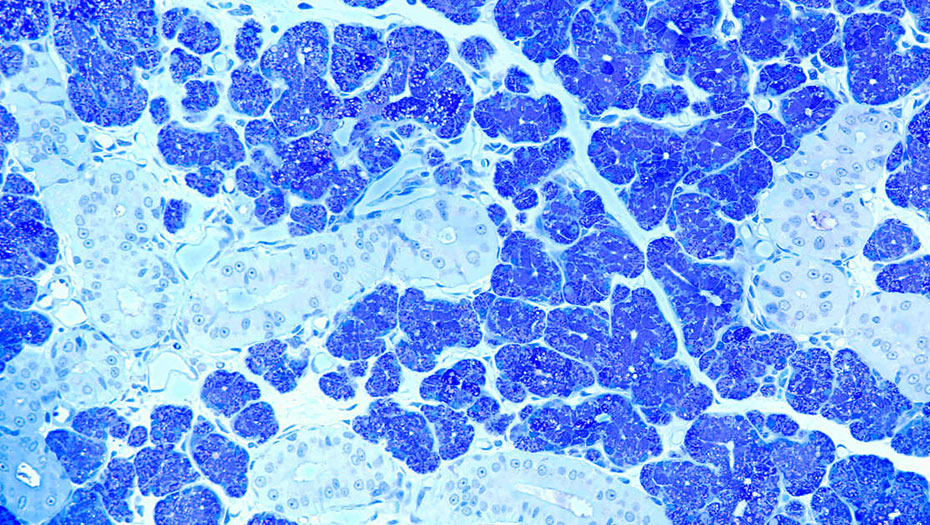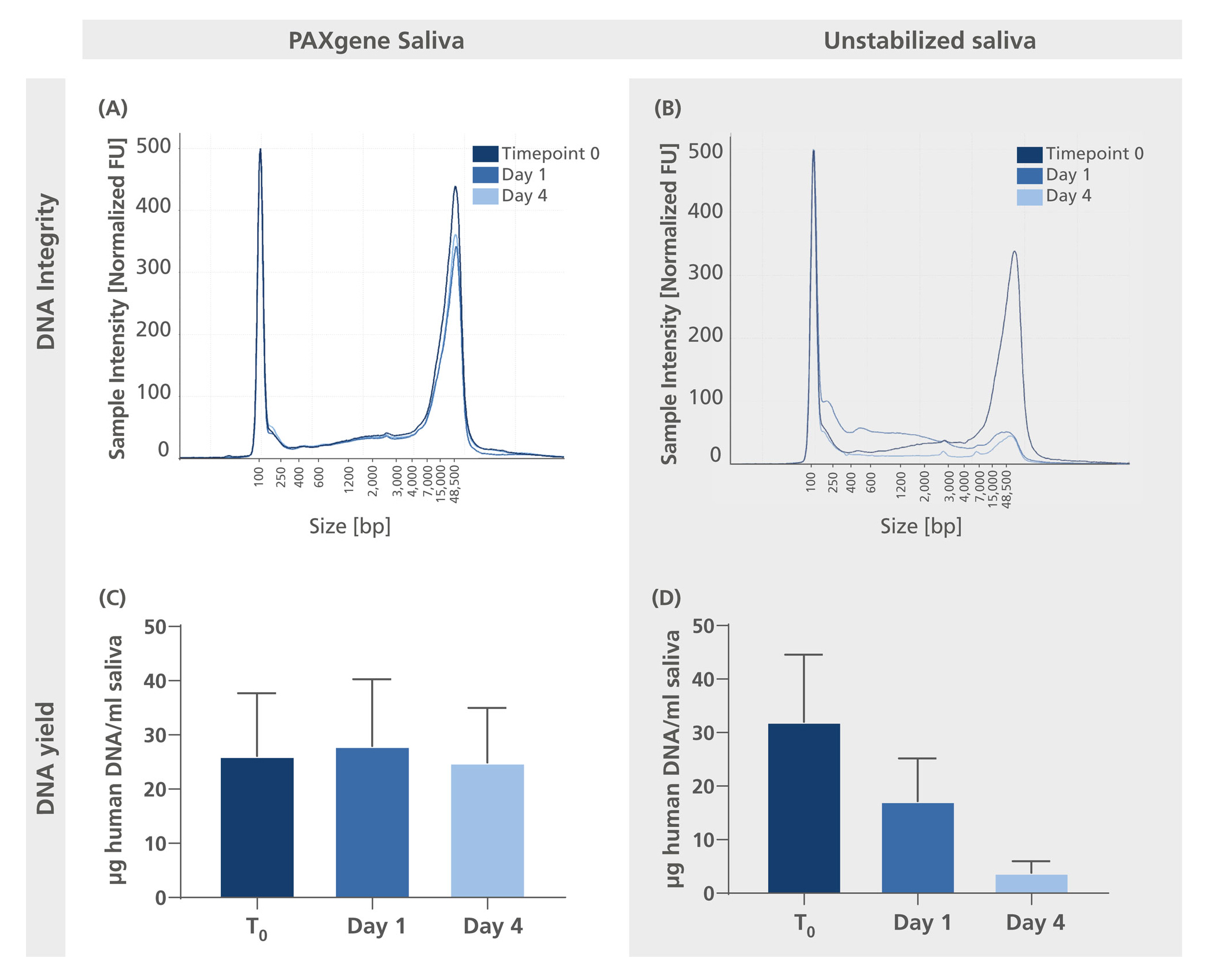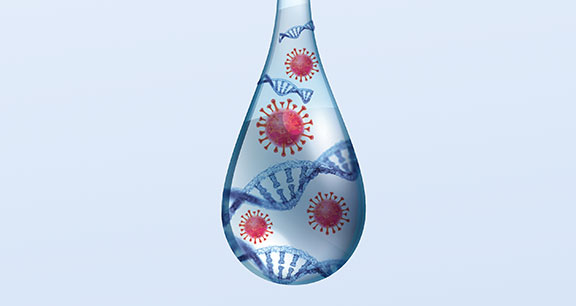


What is the composition of saliva?
Saliva is a biological fluid composed of more than 99% water and other molecules such as cells, DNA, RNA, proteins, hormones, metabolites and microorganisms. These components can be used as biomarkers and provide insights into local and systemic diseases and conditions1.
Saliva is secreted by major and minor salivary glands, while the total volume per day is on average 500-600 ml and varies widely among individuals1.


Saliva collection is painless and user-friendly as it is suitable for home-collection.
The ease of saliva collection increases the acceptance of this non-invasive sample type compared to other biological samples such as nasopharyngeal swabs and blood and improves safety e.g. for healthcare professionals.
The PAXgene Saliva Collector contains a solution to stabilize DNA levels as well as SARS-CoV-2 derived RNA in human saliva samples and inhibits bacterial growth over time.
Integrity and yield of human DNA is preserved efficiently in PAXgene Saliva stabilized samples while human DNA in unstabilized saliva samples degrades quickly.


With the PAXgene Saliva Collector we provide an integrated workflow consisting of saliva sample collection, stabilization and QIAGEN nucleic acid purification.
The stabilizing solution in the PAXgene Saliva Collector protects human DNA in collected specimens at room temperature (up to 24 months at temperatures up to 25°C) or frozen at -20°C to -80°C (long-term storage study ongoing). Thus, temperature fluctuations up to 25°C during transportation and storage do not impact the DNA yield, purity and integrity that is subsequently purified.


Genomic DNA from saliva collected in PAXgene Saliva Collector (MBA) can be isolated with several QIAGEN extraction kits and on the QIAcube and QIAsymphony instruments for automated processing of samples.
*Per 24 samples when using the PAXgeneSaliva1000_V1 protocol on the QIAsymphony SP instrument.
Are you interested to receive your PAXgene Saliva Adapters? Contact Us.

1 Proctor GB. The physiology of salivary secretion. Periodontol 2000. 2016 Feb;70(1):11-25. doi: 10.1111/prd.12116. PMID: 26662479.
Preanalytical steps can cause variability in nucleic acid quality and yield, which can render results from different labs and between different operators incomparable. The integrated PAXgene Saliva workflow contributes to reliability and reproducibility of test results.
Nucleic acids from collected and stabilized PAXgene Saliva can be used for various research applications like e.g. genetic analysis (DNA), genome wide molecular research platforms, molecular genotyping, DNA methylation analyses or SARS-CoV-2 RNA detection.

Learn how easy-to-use the PAXgene Saliva Collector is with this instructional video

Watch Franziska Kaiser (Scientific Expert PreAnalytiX) in this on-demand webinar: Saliva as easy-to-use sample type in integrated workflows for DNA and SARS-CoV-2 research: how to standardize collection and extraction

Read more about the application of the PAXgene Saliva Collector for SARS-CoV-2 detection and quantification